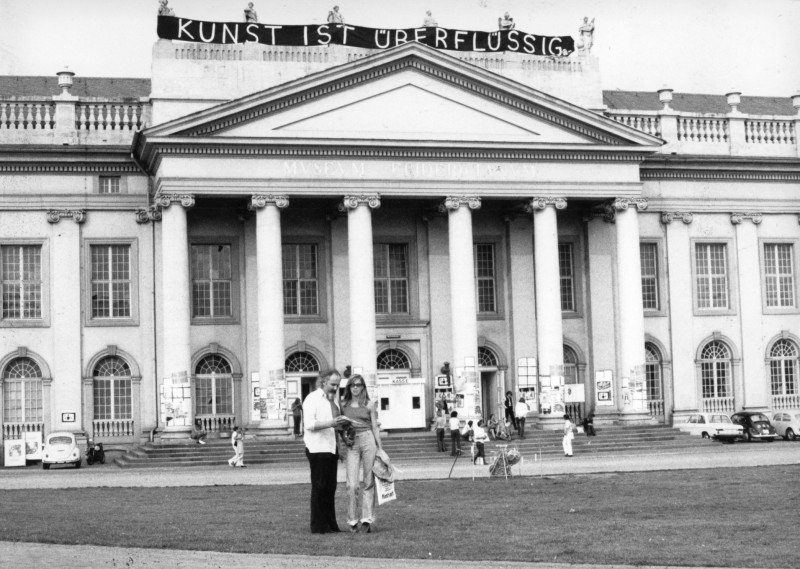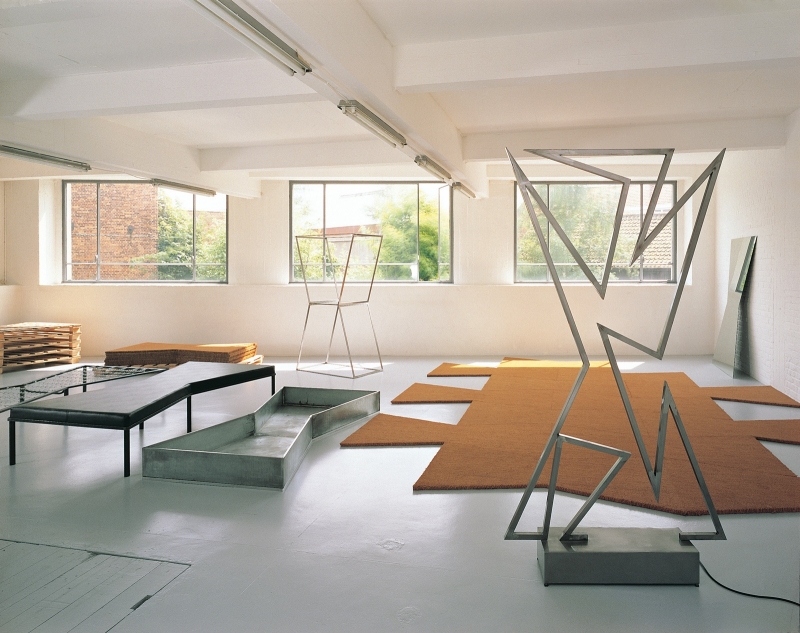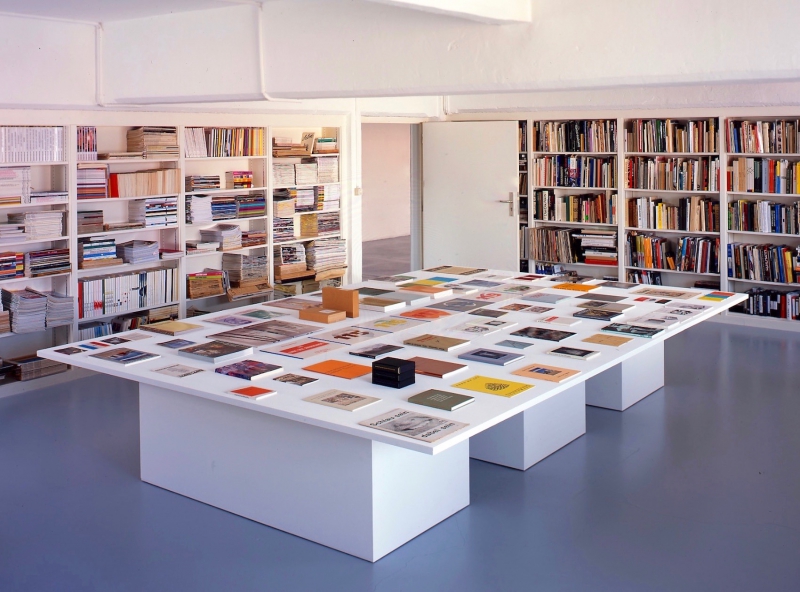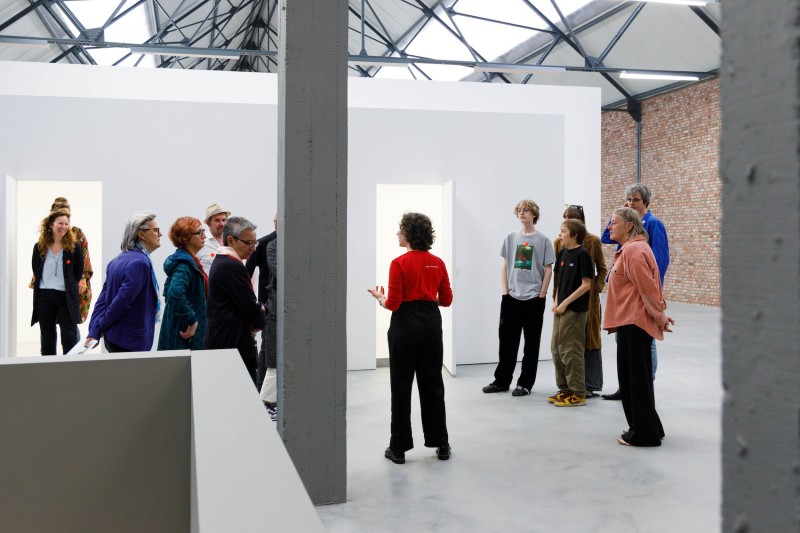 Annick and Anton Herbert, Documenta 5, 1972 (Ben Vautier, Kunst ist übertflüssig)
Annick and Anton Herbert, Documenta 5, 1972 (Ben Vautier, Kunst ist übertflüssig)
HERBERT FOUNDATION
Herbert Foundation is a private foundation for contemporary art in Ghent, established by Annick and Anton Herbert. Their art collection and archive focus on the artistic developments in the periods around 1968 and 1989.
The site of Herbert Foundation comprises industrial buildings located on Raas van Gaverestraat and the Coupure Links that offer more than 6,000 m² of exhibition space.
THE COLLECTION HERBERT
“For us, it was more important to be part of a group that wanted new situations in the art world and beyond. 1968 brought about huge mental, cultural and political changes. Collecting this group of artists was not about possession of the works, but an appropriate way of participating in a social structure. If we wanted to take part, we had to become fully engaged in both the intellectual and material aspects. We collected because we wanted and needed these works of art around us, like books, and our involvement was intensive” (Annick and Anton Herbert)
In 1973, the purchase of Carl Andre’s 64 Lead Square (1969) marked the beginning of Anton and Annick Herbert’s collection and archive. Over the next thirty years, it expanded to include the work of some fifty international artists. “We couldn’t not collect it”, they said, “our interest in contemporary art and collecting has always been an intertwined process.”
Circa 1968-1989
The collection spans three decades of profound social change. After the years 1960 and 1970, when the student uprising of May 1968 reflected a utopian world view, the fall of the Berlin Wall in 1989 served as a historical fault line.
Two generations
Two generations of artists can be distinguished within the collection. The first includes figures such as Marcel Broodthaers, Bruce Nauman, Daniel Buren, Carl Andre, Sol LeWitt, Donald Judd, Gilbert & George, Gerhard Richter, Dan Graham, Jan Dibbets, Luciano Fabro and Mario Merz. The second generation, which became part of the collection from the 1980s onwards, includes Thomas Schütte, Reinhard Mucha, Jan Vercruysse, Didier Vermeiren, Franz West, Mike Kelley, Martin Kippenberger and Heimo Zobernig, amongst others. By bringing the two generations together, the collection forms a subjective historical resource that highlights both their contradictions and their similarities.
In around 2005, the decision was taken to complete the collection and not to supplement it with any new artists. From that point onwards, greater depth was added to the existing ensemble by expanding the archive.
 Segno Arte – Unlimited (12 Pezzi) of Michelangelo Pistoletto, 1976 – 1998 (Raas van Gaverestraat, Ghent)
Segno Arte – Unlimited (12 Pezzi) of Michelangelo Pistoletto, 1976 – 1998 (Raas van Gaverestraat, Ghent)
Ensembles
Annick and Anton’s collection focuses on Conceptual art, Minimalism, Arte Povera, Land Art and the period 1980-1990. Rather than pursuing an art historical overview, the aim is to combine high-quality ensembles with key works. The Herbert collection is thus one of the most coherent international collections of works from this period.
Contact with the artist
Personal contact with the artist underpins the collection. These conversations and discussions strengthened the Herberts’ connection with their own generation and the society around them. They shared this method of collecting with Tony Herbert (1902-1959), Anton’s father, who assembled one of the most important collections of Flemish Expressionism.
The archive
An archive was also assembled around the collection. This repository, which now contains over 30,000 artefacts, includes a wide range of documents: letters, drawings, editions, rare artists’ books, exhibition catalogues and publications, magazines, invitation cards, posters, photos, and audio and video recordings. The archive is not a closed entity and is actively augmented with new documents via purchases and donations.
 Herbert Archive
Herbert Archive
The buildings
From the outset, Anton and Annick Herbert attached great importance to the display of their collection. Their preference was for neutral architecture that did not compete with the artworks. Historical industrial buildings, which they painstakingly renovated, offered the perfect solution. Herbert Foundation is an important part of Flanders’ industrial heritage due to the deep respect paid to the original character of the buildings.
Herbert Foundation
Herbert Foundation was established in 2008 to consolidate the collection and archive in their original setting. Alongside the buildings in the Raas van Gaverestraat 106/108, the Foundation also has a public exhibition space at the Coupure and a green inner courtyard. The first exhibition to open its doors to the public was As if it Could, Overture, which was organised in 2013.
With Herbert Foundation, Anton and Annick established a space that uses the collection and the archive as a basis for research into the artistic developments of the 1960s, 1970s and 1980s. “The Herbert Foundation wants to give those interested from both Belgium and abroad the chance to make a connection between this period and the present day”, they explain. “The Foundation is a place where people can encounter our generation of artists.”
 Photo: Y. van der Hoeven
Photo: Y. van der Hoeven